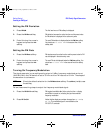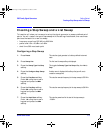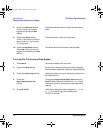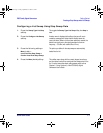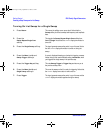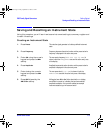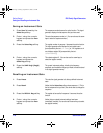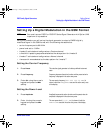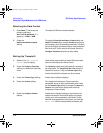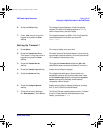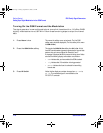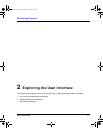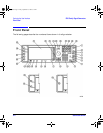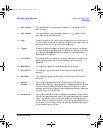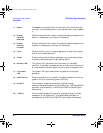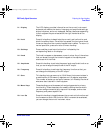
1-12 Quick Start Guide
Getting Started ESG Family Signal Generators
Setting Up a Digital Modulation in the GSM Format
Selecting the Data Format
Setting Up Timeslot 0
1. Press Mode. Then press the
following softkeys:
Real Time I/Q Baseband (if it
appears) > TDMA > GSM.
This selects the GSM communications standard.
2. Press the
Data Format Pattern Framed
softkey.
This toggles the Data Format Pattern Framed softkey from
Pattern to Framed. When you select Framed for bursting the
frame envelope, you will be transmitting framed data. This means
that you will be bursting the timeslots that you have activated and
there will be no RF carrier during the off timeslots. Notice that
Configure Timeslots has become an active softkey.
1. Observe the GSM Timeslot
Pattern on the display.
Notice that the preset condition for timeslot #0 has the timeslot
turned on and configured as a Normal channel.
2. Press the Configure Timeslots
softkey and observe the softkey
menu.
The Timeslot # softkey shows that timeslot #0 is selected as
the active timeslot. The Timeslot Off On softkey shows that
timeslot #0 is turned on. Finally, the Timeslot Type softkey
shows that timeslot #0 is configured as a Normal channel.
3. Press the Timeslot Type softkey. Another menu of softkeys is displayed.
4. Press the Custom softkey. This changes the timeslot type to Custom timeslot and
automatically returns you to the previous softkey menu. Notice
that the Timeslot Type softkey has changed from Normal to
Custom. Also notice that the display shows timeslot #0
configured as a Custom timeslot.
5. Press the Configure Custom
softkey.
Another menu is displayed showing you data choices for the
timeslot’s transmission. Notice that the display has changed,
showing you a visual representation of the timeslot. Directly
below the visual representation of the timeslot, you should see
Data: PN9. PN9 is the default timeslot transmission data.
qsg.book Page 12 Friday, September 22, 2000 3:13 PM



